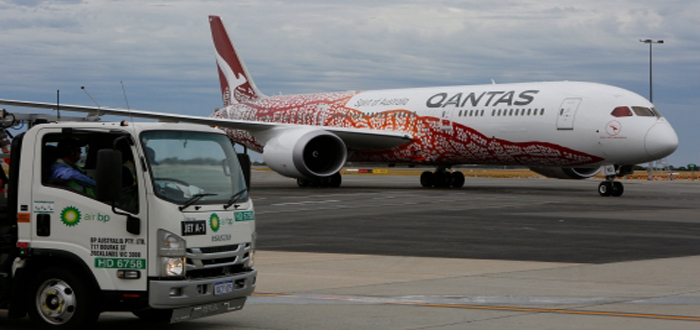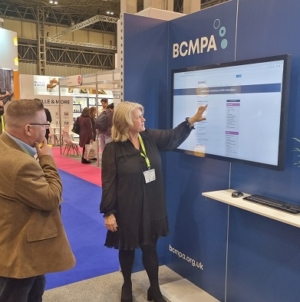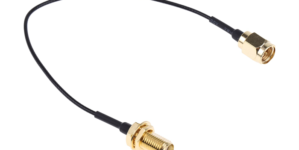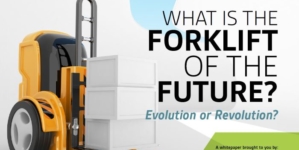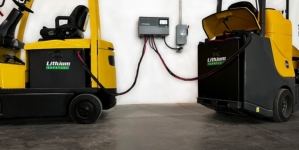-
ROSSLARE EUROPORT TARGETS HEALTH & SAFETY WITH CAMERA TELEMATICS PARTNERSHIP - 2 days ago
-
Landmark Study Reveals Wearable Robotics Significantly Boost Safety and Efficiency in Industrial Environments - July 24, 2024
-
Visku Tackle The Retail Seasonality Challenge One Pallet At A Time - July 22, 2024
-
KAMMAC AND BERGEN LOGISTICS STRENGTHEN FASHION & LIFESTYLE SERVICES IN THE UK - July 19, 2024
-
TENTBOX EXTENDS PARTNERSHIP WITH ARROWXL TO SUPPORT INCREASING DEMAND - July 17, 2024
-
The Perfume Shop improves customer journeys while driving profitability in partnership with Scurri - July 17, 2024
-
ZEROMISSION SECURES £2.3M ($3M) INVESTMENT TO ACCELERATE ELECTRIC FLEETS - July 16, 2024
-
BCMPA CELEBRATES SUCCESS OF 2024 CONFERENCE - July 15, 2024
-
Best of the Best: Jungheinrich Celebrates Triple International Award Win - July 12, 2024
-
GOPLASTICPALLETS.COM CALLS ON NEW CHANCELLOR RACHEL REEVES TO CONSIDER PLASTIC PACKAGING TAX REFORM - July 10, 2024
Fuelling the ‘flying kangaroo’: Air BP supplies historic 17-hour flight.
It once took four days and involved seven stops to make the journey by air between Australia and the UK. Today, seven decades on, passengers from Perth can be in London in 17 hours. Qantas has launched the first-ever flights to make the 9000-mile (14,500km) journey non-stop. And BP is providing one of the essential components for the new service – jet fuel, produced at its Kwinana refinery and supplied by Air BP.
How did BP deliver seven major projects in 2017? The leader responsible reflects on those upstream start-ups
Fondly known as the ‘kangaroo route’, when Qantas became the first airline to offer a complete journey from Australia to the UK in 1947, passengers faced an endurance test. The journey took four days, with some 55 hours in the air and seven stops along the way. Still, it was a vast improvement from the first multi-airline offering between the two countries in the 1930s: that effort took 12 days, with 31 stops and a train journey on the penultimate leg through Western Europe.
Air travel in the 21st century has been transformed on so many fronts – speed, comfort and safety to name a few. There are possibly less remarkable sights now though – passengers are unlikely to ever encounter a runway doubling for a golf course, as was reported from Port Hedland airport on Western Australia’s northern coast in the 1930s.
Now, Qantas is marking a milestone in aviation history with a new route from Perth to London, the first non-stop journey between Australia and the UK. The daily addition to the airline’s schedule is good news for BP too – the jet fuel for all flights out of Perth airport is produced at BP’s Kwinana refinery, located some 50km south of the city. And Air BP supplies that fuel to Qantas flights.
“We’re part of something ground-breaking here,” says Air BP’s Perth airport manager, Wayne Harries, who oversees a team of 35. “There is one essential consumable that the plane needs to get to its destination – fuel. It’s great business for us. But, more than that, the new daily flight is good for the airport, the city and the whole state.”
London calling
Air BP staff play a critical role in preparing the Qantas Dreamliner Boeing 787-9 for its long journey to London. Once the plane arrives from its starting point in Melbourne, ground staff will have 90 minutes to prepare it for the next leg.
Among all the activities during that time – passengers alighting and boarding, the loading of food and luggage, the finalizing of flight plans – it is refuelling that will take the longest.
“We’re loading hundreds of thousands of litres of jet fuel, pumping at 3,000 litres a minute from the dispenser,” says Harries. “That job doesn’t finish until about 15 minutes before departure as we wait for the pilot to complete the calculations on the plane’s final weight, before we load the exact quantity of fuel.”
Pilots do their maths in tonnes – to know how much weight must be lifted off the runway – but fuel is pumped by volume, so the calculations get complicated. “We give Qantas the specific gravity of the jet fuel, but that can change with temperature. So, we need to monitor both volume and density of what we’re putting on board. Technology on the state-of-the-art plane also works it out itself but we never rely solely on a computer.”
Flight plans
The route has been more than two years in the planning to test its viability: Qantas pilots have ‘flown’ the non-stop journey on computers daily with near-full payloads and using the winds of the day to build an archive of data. Taking into account the reserves it needs for encountering bad weather or route changes, the Dreamliner plane will be flying at almost maximum fuel capability from Perth to London.
Meanwhile, on the ground in Perth, Air BP teamed up with Qantas and the airport authority to prepare the infrastructure. With the new service leaving from the domestic terminal, rather than the international one, to save incoming passengers time and hassle, the aircraft parking and refuelling arrangements needed a solution.
“Qantas wanted the international flight to London to leave from the domestic terminal to offer passengers a seamless experience with internal connecting flights,” explains Harries. “As operators of the fuel facility here, Air BP also provides design and project management for the underground hydrant piping system. We looked at how best to refuel the plane without the need to reroute that system, and suggested realigning the parking position which was trialled and implemented.”
Ready for take-off
It is hoped that the new Qantas route will open up further opportunities. Other airlines have applied for government approval to make Perth a stopover on routes from Latin America to South East Asia, while Australian passengers may soon be able to fly directly with Qantas to other European capitals such as Paris.
Summing up the potential, Harries says: “Perth has always been at the end of the world.
“We’re not on the way to anywhere so these prospective new services offer passengers a reason to consider us as a stopover and destination in our own right. They open up a range of exciting possibilities for tourism and the local economy.
“And for Air BP, these flights are great for our business. We have been innovating and leading the aviation industry for more than 90 years, working with our customers to create value together in a growth market. Qantas are our number one customer in Perth and we’re proud of that relationship, just as we are to be part of this ground-breaking new non-stop route to Europe.”




























